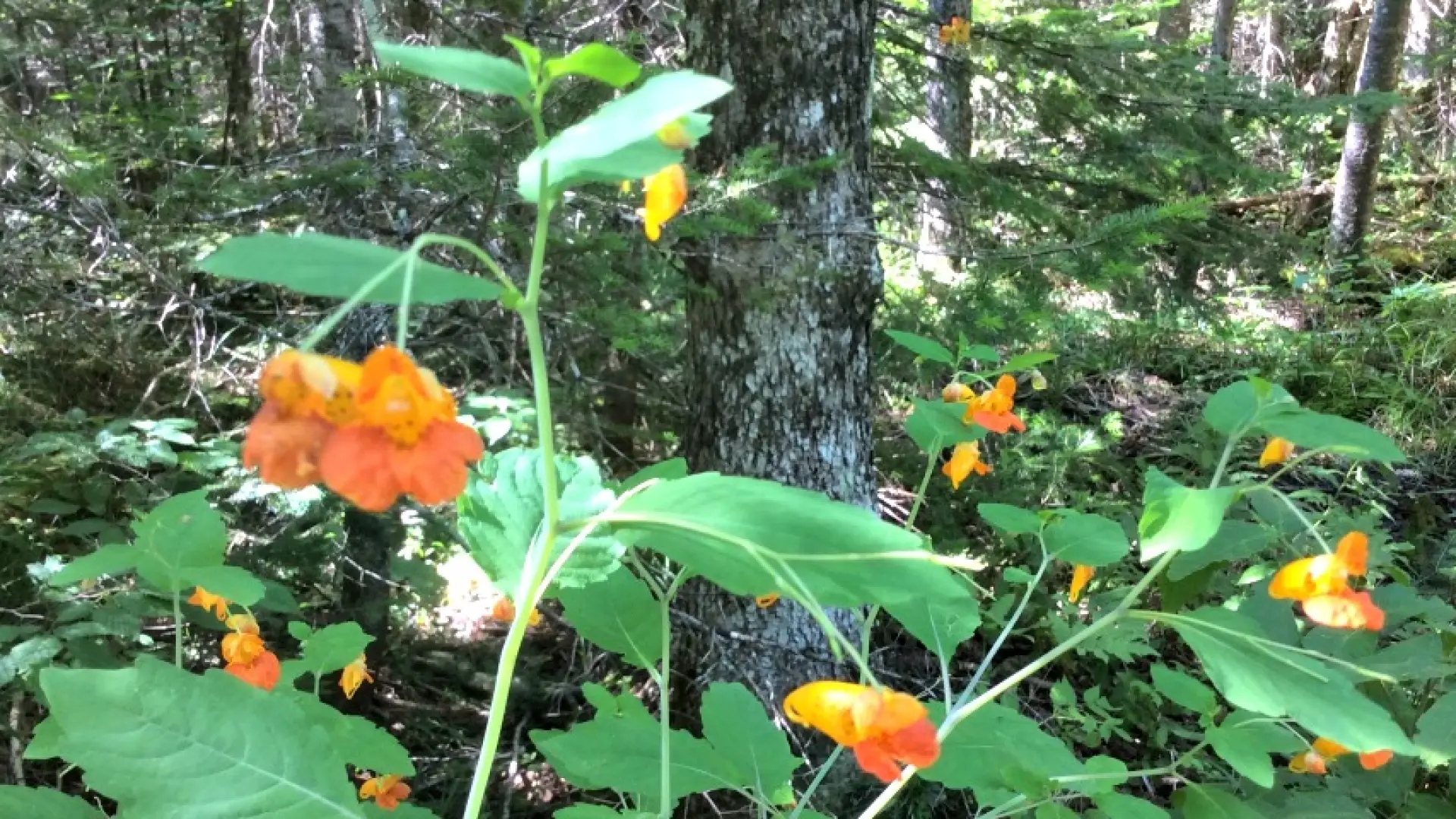
Of course, wildflowers are everywhere. They grow wild!
But if we want to find bunches of them, and enjoy them at our leisure, here are some great spots to find lots of different kinds.
Sunny hike
When I want lots of wildflowers, I head for one of the sunniest hikes in the area, part of the complex known as Henry's Woods. I park on the side of the round-graveled road, near the trailhead map. I will be heading to the left, the Orchard Loop trail, which is about 1.5 miles round trip.
Even the beginning section, which is deep forest, offers some lovely specimens trailside. At this point, we are walking along a causeway through a wooded swamp that was used as a farm road, back when this was the Uihlein Farm.
This patch of teasel (below) was only a 5-minute walk down this bog and forest path. All around were the contrasting cool of shady evergreens, but this plant was thriving in a patch of sunlight. Likewise, (above) a bright splash of spotted touch-me-not (Impatiens capensis) spills into the trail.
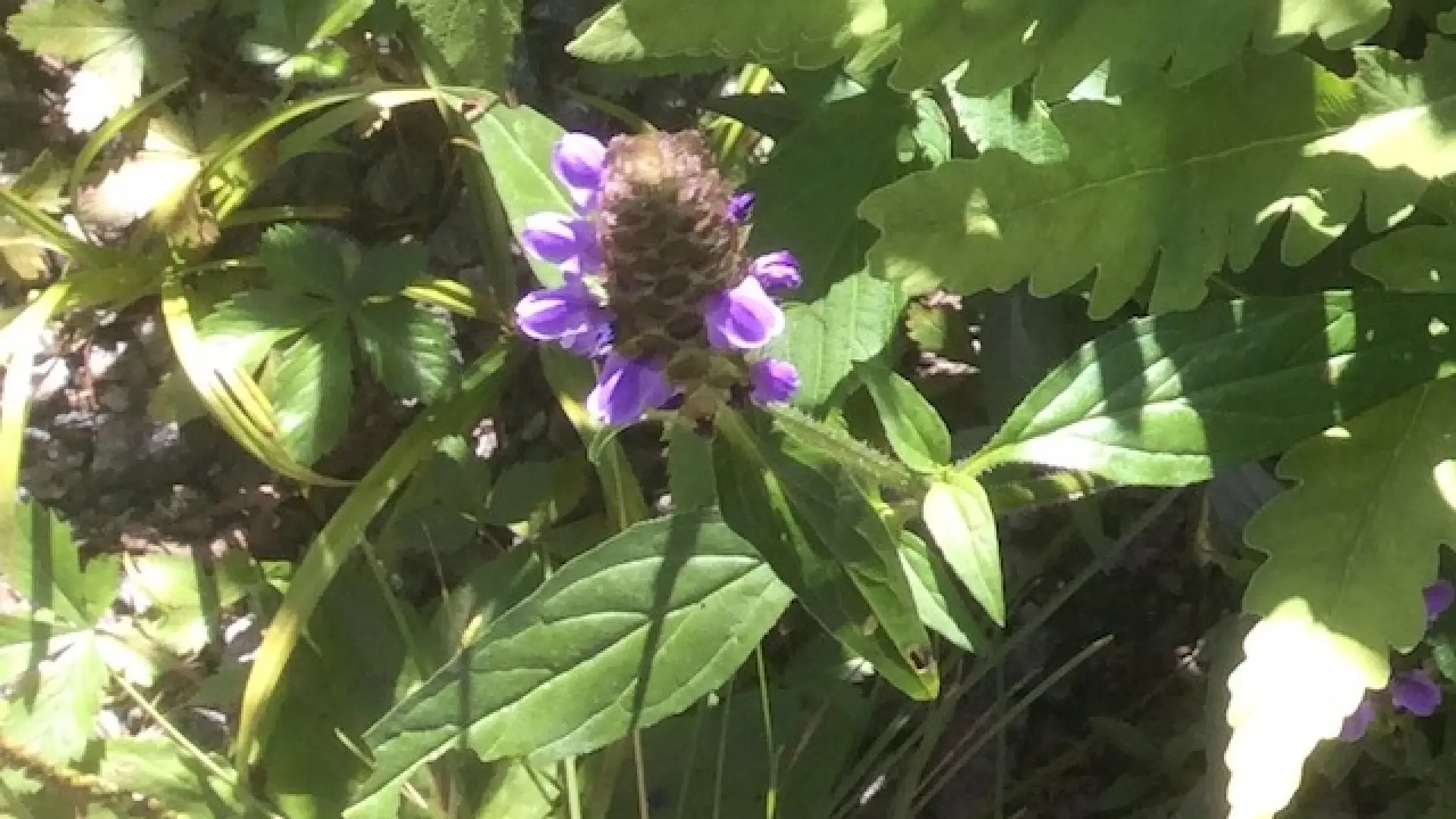
It's only a short walk through the forest before a giant meadow leaps into view. Bathed in dazzling sun, this was where prize winning Jersey cows once grazed. The remains of the old apple orchard now has a big loop path through it. This is where the loop trail begins, and upon completion of the loop, returns.

There's plenty of goldenrod (Solidago nemoralis) in the foreground of the picture above. Gold is a prominent color here, with the large petals of brown-eyed Susan (Rudbeckia triloba), the bright centers of oxeye daisy (Leucanthemum vulgare), and the pure gold bowls of meadow buttercup (Ranunculus acris).
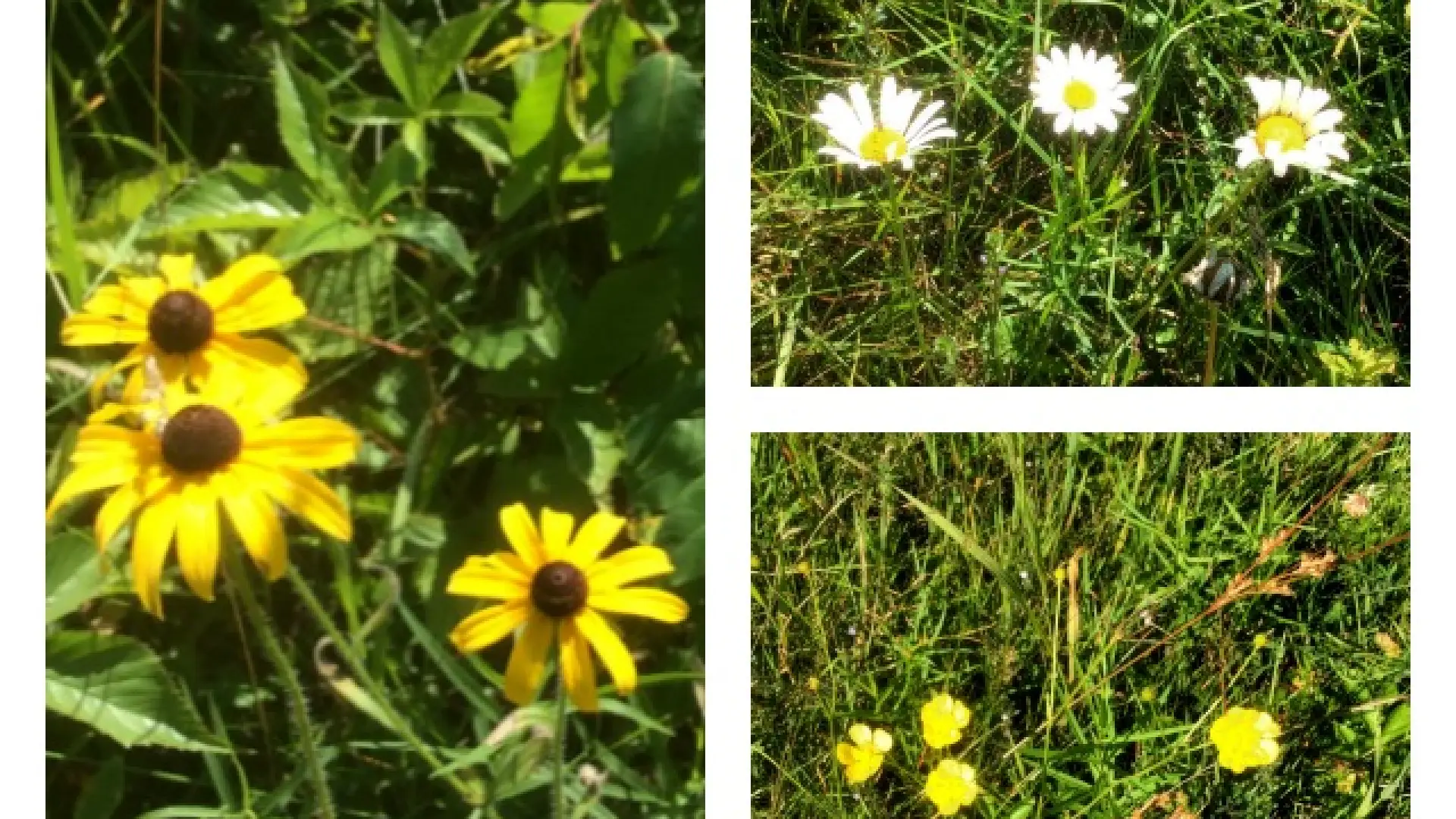
Meadow buttercup is the only form of buttercup that has a smooth flower stalk. Pay attention, because this is a fine warning to not pick those lovely flowers. The juice is strongly acidic and might blister delicate skin areas. In contrast, brown-eyed Susans are members of the coneflower family, a large group that includes purple echinacea, which is known in herbal lore as a tonic for immune system support.
This is only a few of more than 20 different varieties to observe along this trail. An excellent way to keep small children interested is to challenge them to find all the different kinds, and keep track with a notebook or cellphone.
Scenic course
Run or bike the River Road along the Ausable River and find some wetland wildflowers. The abundant sun and water to be found along the river shore creates a lot of viewing pleasure, with marvelous photographic possibilities.
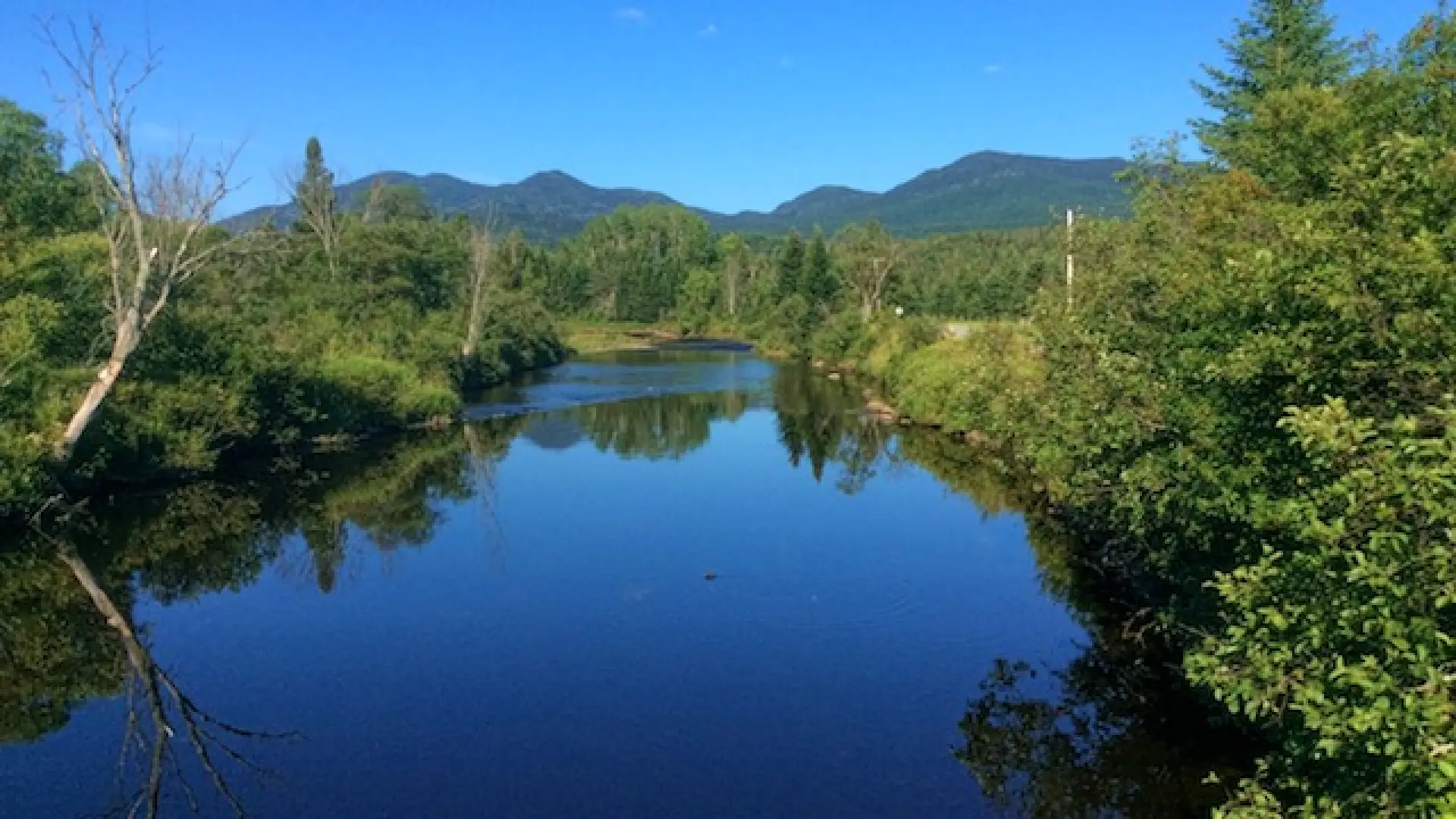
There are abundant areas to pause in. Be on the lookout for some old, single lane bridges, which are mere steps off the main route. These can give us a long view along the river axis, and closer access to the wildflowers. Swamp milkweed (Asclepias incarnata) has large clusters of an eye-catching pink, with each individual flower looking as though it is a precisely carved miniature.
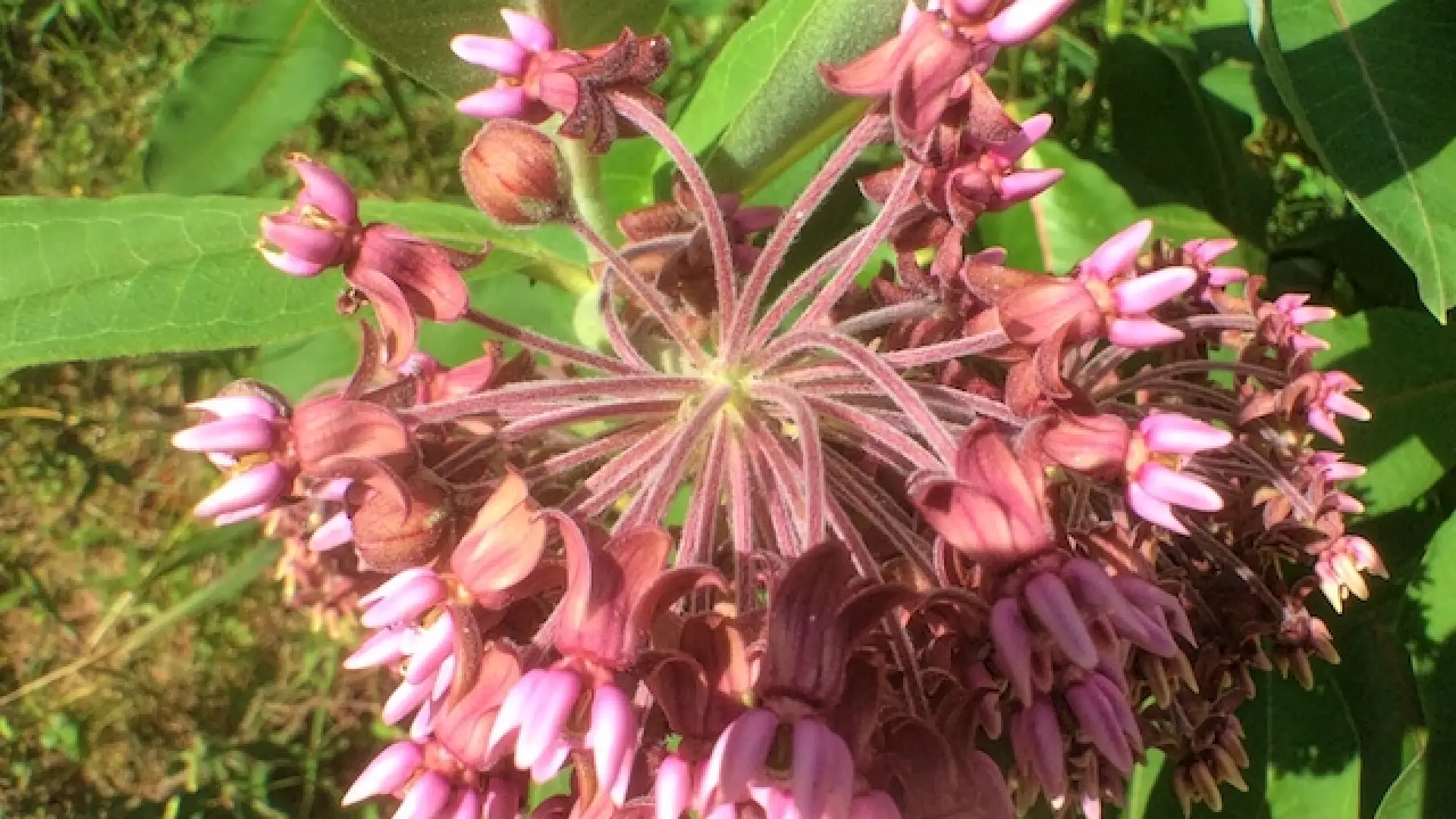
Another favorite is thistle, which is considered a weed. But if this bunch of blooms were pointed out during a garden tour, how can anyone not appreciate such a tangled riot of bright color and the matching pointy foliage?
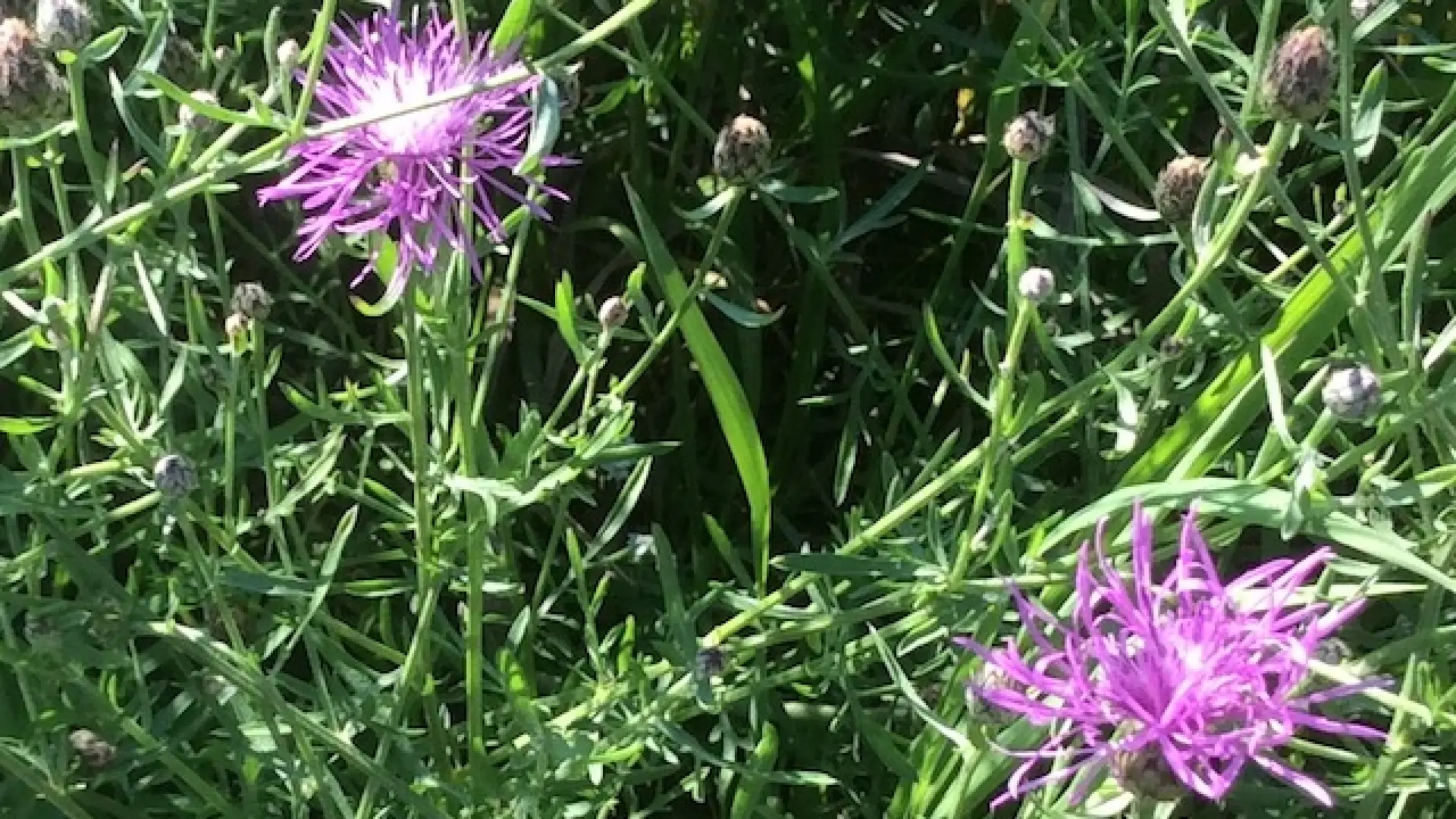
On February 1, 1895, the humble red clover became the official state flower of Vermont. This was about its utility: It is food for cows, nectar for honeybees, and an herbal anti-inflammatory when used to make tea.
But this is not a native of Vermont or the Adirondacks, or even of North America. Its special qualities were so prized it was brought here by European settlers, and it swiftly naturalized.

I regard red clover as another "shy beauty." It gets overlooked since it is everywhere, but if we lean close, we can find its delicacy and color most amazing.
The River Road ends at the junction with Route 86, near the outer edge of Lake Placid.
Driving style
Make it a scenic drive with our 9.6 mile loop, which picks up where River Road leaves off. Going north will take you to Wilmington, while going south will bring you back to the Sentinel Road (Route 73) and Main Street intersection.

At the end of River Road there is a bridge and parking area next to the West Branch of the Ausable River. It's a fine place to stop, with a very short path to the sandy bank of the river.
The parking lot itself has abundant wildflowers. This inhospitable gravel patch pictured below has mullein (Verbascum thapsus), which is the tall, fuzzy plant in the upper left quadrant, not yet blooming with its large yellow flowers.
The white in the upper right quadrant is Queen Anne's lace (Daucus carota), with each stem a bouquet of tiny white flowers. These can be stir- or deep-fried for tasty carrot flavor, since this is the plant our grocery store carrots came from. The entire plant was once prized for its healing qualities.

The yellow along the top is birdfoot trefoil (Lotus corniculatus), and the yellow along the bottom is common St. John's wort (Hypericum perforatum). The long stems at the very top are a pink form of bladder campion (Silene cucubalus).

If you take the very short hiking path to the sandy riverbank, you get pretty views of the rocky shore. It's a fine place for startling lighting contrasts as the sun streams over the open water.
However you decide to travel, these are close to town and no one has to go very far. But you have seen a lot of lovely nature.
Stay awhile at our wide range of lodging. Explore our wonderful dining. Revel in more of our outdoors.
ADK end of summer fun!